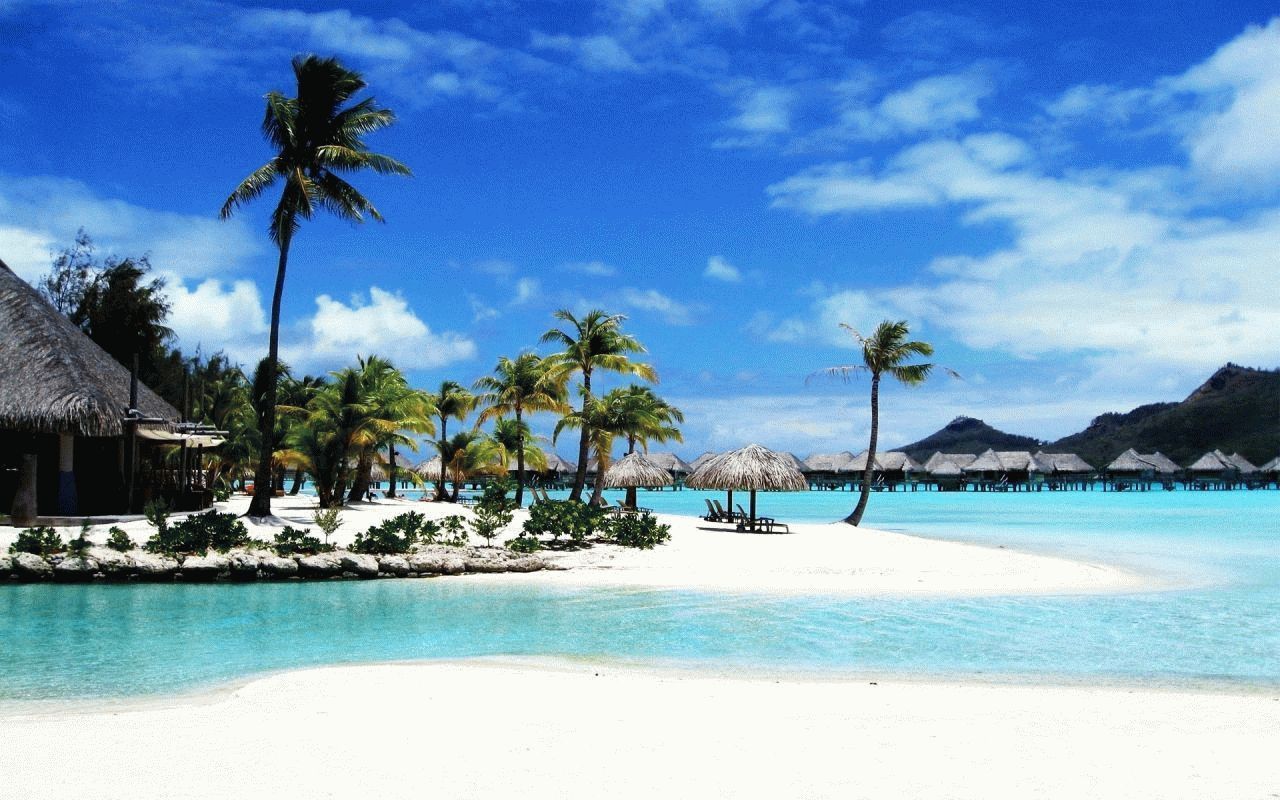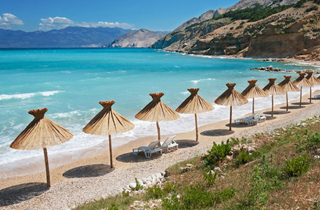Opatija croatia history. Opatija - all about relaxing in a prestigious resort in Croatia. Distance to airports
Opatija / Opatija city - Croatia's most popular resort, located on the shores of the Kvarner Bay of the Adriatic Sea of \u200b\u200bCroatia.
The mild climate, laurel forests, unforgettable natural beauties, historical and cultural monuments ... all this glorified the resort of Opatija as one of the best resorts in Croatia and Europe.
The resort of Opatija dates back to the 19th century, when it became known as the resort of the nobility of Austria-Hungary. Here at the resort rested members of the imperial family of Austria-Hungary and many celebrities - Emperor of Germany Wilhelm II, Franz Joseph 1, Gustav Mahler, Isadora Duncan, Anton Chekhov, Remarque and others.
The name of the city “Opatija” comes from the Latin word “abbazia” - a monastery, a monastery, since the city developed around the 15th century Benedictine monastery of San Giacomo della Prilucha.

Opatija is mentioned in several well-known literary works - in the story of Anton Chekhov “Ariadne”, in the story of Taffy “Crawlers”. Opatija became the prototype of the Adriatic town in the story of Vladimir Nabokov “Spring in Fialta”.

Today, Opatija is a modern resort city with a developed tourist infrastructure. The population of Opatija is about 12,000 people.
Sights of Opatija
TO attractions of Opatija are 12 km chic promenade - Lungomare, the spa life of Opatija is concentrated here, there are cafes, restaurants and various shops.

The architectural sights of the city include church of St. James (erected on the foundation of a 15th century Benedictine monastery and church of the Annunciation 1906 (Neo-Romanesque style).
Recognizable sculpture and symbol of the city of Opatija - Girl with a seagull - appeared on the seashore in 1956.
Picturesque city streets, built up under the influence of many eras and styles, squares and boulevards create a unique pacifying city flavor.

Built during the reign of the Austro-Hungarian Empire, restored villa Angiolina and Villa Amelia, built in 1844 in the classicist style with a chic garden, both villas have retained the appearance and interior decoration of that era and are open for viewing. Visitors will be able to climb to the observation deck, which was admired by the great ballerina Isadora Duncan.

In winter, the famous is held in Opatija, in April - festivals of coffee, Croatian wines and flowers, in May - a rock festival, as well as liburnia Jazz Festival - www.liburniajazz.hr, organized in Opatija since 2005.
Video Liburnia Jazz Festival:
Protection from the winds by Uchka Mountain (1396 km) and a unique mild subtropical climate make it possible to grow camellias, magnolias, palm trees, bamboo and other evergreen vegetation, among which there are reconstructed old hotels and modern ones with SPA centers, tallotherapy and treatment and prevention services on the most demanding guests.
Opatija also offers many individual villas.

Opatija offers its guests a chic promenade Lungomare 12 km with cozy cafes and many restaurants of national and international cuisine, as well as discos, nightclubs, casinos, concert venues, theaters and exhibitions, as well as tennis courts with different coverings, swimming pools, windsurfing and walking on horseback for lovers of active sports recreation.
15 km from Opatija is the famous race track. Opatija constantly hosts concerts of classical music, folklore festivals, film festivals and sports. In the evenings, live music is heard everywhere.
For arrivals in Opatija there is a marina.
Video Opatija Croatia:
Kvarner beaches

The beaches of Kvarner are picturesque and varied, there are sandy, pebble and rocky beaches.
The most popular beach of Kvarner Bay Beach Paradise on the island of Rab.
Kvarner beaches include beaches of resorts and islands:
- beaches of the resort town of Opatija
- beaches of the resorts Crikvenice and Novi Vinodolski
- beaches of Rijeka
- beaches of the islands of Krk and Rab
Hotels in Opatija
Get to Opatija
Get to Opatija by plane
The nearest airport to the resort of Opatija is Pula - 98 km
- Distance to Zagreb Airport - 179 km
- Distance to Zadar Airport - 398 km
- Distance to Krka Local Airport - 42 km
Car hire at Pula Airport
If you need to get to Opatija, the most comfortable nearest airport will be the airport of Pula. Upon arrival, you can rent a car and for 2-3 hours driving along a beautiful road, you will come to rest 🙂
Private transfer to Opatija
- Transfer from Zagreb Airport to Opatija - 220 Euro / 320 Euro
- Transfer from Split Airport - 400 Euro
Get to Opatija by bus
The bus station of Opatija receives and sends intercity buses from the cities of Croatia - Pula, Rijeka, Umag, Rovinj, Varazdin, Split, the capital of Croatia - Zagreb.
From the capital of Zagreb to the city of Opatija approximately 3 hours by bus.
The city is also connected by regular bus lines to European cities - Trieste (Italy), Ljubljana (Slovenia), Vienna (Austria)
Address opatija bus station - Velog Joze 1, 51410 Opatija
Telephone bus station of the city of Opatija +385 060 306 010
The bus traffic site in Croatia www.autobusni-kolodvor.com
Get to Opatija by train
Closest to town train Station in the city of Rijeka 15 km.
Get to Opatija by car
Opatija is located on the seashore, not far from the highways connecting Zagreb and Pula, Zadar and Trieste (Italy) - the Jadranska highway (E65), connecting all coastal resorts, towns and villages of Croatia.
Croatian Expressway A1 (98) runs 98 km from the city, connecting Zagreb and Split, the two largest Croatian cities.
Distance from the city of Opatija to the cities of Croatia
- Distance from Opatija to - 174 km;
- Distance to the cities of Kvarner:to the city - 56 km; to the city
- Ljubljana Slovenia - 111 km
- - 225 km
- Milan Italy - 476 km
- Vienna Austria - 487 km
- Munich Germany - 510 km
- Bratislava, Slovakia - 527 km
Opatija on the map of Croatia
The city of Opatija is located in the northeast of the Istrian peninsula of Croatia, on the slope of Mount Učka on the Adriatic Sea.
Weather in Opatija
Uchka Mountain, which reliably protects the resort from strong sea winds in winter and from strong heat in summer, creates a unique mild microclimate in Opatija that promotes healing and restoration of strength.

Average monthly air temperatures in Opatija
january +9 C
February +10 C
March +12 C
April +16 C
May +22 C
June +26 C
July +28 C
August +28 C
September +24 C
October +19 C
November +13 C
December +10 C
Average monthly water temperatures on the beaches of Opatija
january +11 C
February +12 C
March +13 C
April +15 C
May +20 C
June +22 C
July +26 C
August +27 C
September +23 C
October +21 C
November +16 C
December +12 C
The page used photos from the sites www.panadea.com, www.rivijera-opatija.hr, www.opatija.net, www.novilist.hr, commons.wikimedia.org, www.smokvina.hr
OPATIA- One of the most fashionable resort cities in Croatia. How the resort was formed in 1844, and since then royal families and many celebrities have chosen Opatija for their holidays.
The advantageous location in the bay of Kvarner Bay at the foot of Uchka Mountain (1396 m) protects the city from the winds and creates an excellent microclimate. The average air temperature is slightly higher than in the surrounding areas, so exotic plants grow in the parks - camellias, magnolias, palm trees, bamboo. The city is located in a picturesque place among the hills with magnificent evergreen vegetation.
6 km from Opatija is the city of Lovran - an ideal place for a quiet family vacation, its name owes to the lush laurel groves characteristic of these places. Classical concerts, folklore festivals are often held here, film festivals, international symposiums and sports are held. Many cozy cafes and restaurants at any time of the year are ready to receive guests.
The history of Opatija tourism began in 1844 with the construction of the first villa of Angiolina. Thanks to the activities of famous doctors and the unique climatic conditions, health tourism is developing in Opatija, turning the city into one of the most popular resorts in Europe. Here, such famous historical figures as Wilhelm II, Franz Joseph I, the Austrian Empress Elizabeth, A.P. Chekhov, Isadora Duncan and many others.
Opatija is a unique combination of a healthy climate, natural resources and cultural traditions..
Many hotels are located in historical buildings of the XIX century, but offer all modern conditions for a good rest and treatment, giving true pleasure to connoisseurs of retro style. Opatija is a great place to hold congresses and symposia. Beaches. The main part of the beaches of Opatija is a wide concrete slab with equipped slopes. However, you can find small pebble beaches. The city was built according to the "Cannes" principle, i.e. first comes the beach, then the highway and then the hotels. Entertainment. Opera and concert evenings, film festivals and sports are constantly held in this city. Restaurants There are many restaurants in the city. Our representatives will always help to recommend a good institution. Distinctive features. Opatija is a unique resort, which has no analogues in Croatia. This city is separated from the Istrian peninsula by Uchka Mountain (1396 meters), due to which magnolias, palm trees, bamboo and other subtropical plants grow in its numerous parks. The famous pedestrian promenade runs along the entire Opatian riviera and is 25 kilometers away.
Treatment and recovery. In Opatija, on the banks of Lungomare Boulevard Medical Center "Thalassotherapy Opatija". Despite the name, it offers not only beauty programs, but also special treatment programs aimed at treating the musculoskeletal system, rheumatic, skin, respiratory diseases, sports programs and many different procedures. You can stay in any of the hotels and come to treatment at this Medical Center. The most conveniently located hotels in relation to this treatment center are Crystal 4 *, Savoy 4 *, Astoria 4 *, as well as the Dubrava 3 * hotel adjacent to the Medical Center itself.
What to see
Passing through the center of Opatija, the Lungomare embankment is removed from the sea, “showing” the most beautiful and interesting places of this elegant city.
The statue of the “Girl with a Seagull” is a new symbol of Lungomare, erected in 1956 on the site of the monument Madona del Mare destroyed by the sea.
The city houses the famous Kvarner Hotel, the former Quarnero, the oldest of all existing hotels in the eastern Adriatic, built in 1884 as a luxury luxury sanatorium for the aristocracy and political elite. After the thermal baths were destroyed during the fire, the Crystal Hall was built at the hotel, which in our time is the venue for many social events. Next to Kvarner is Villa Amalia, where Isadora Duncan was resting. In front of the villa is her monument.
Villa Angiolina is considered the pioneer of tourism in the region in which the Museum of Croatian Tourism is located today. Near the villa there is a beautiful park, which contains plants from around the world: sequoias, camellias, black bamboo, etc.
- Statue of a Girl with a Seagull
- Hotel Kvarner
- Villa Angiolina
- Park at Villa Angiolina
How to get there
Opatija is connected by regular bus services to Rijeka.
The distance by road to Pula is 82 km, to the Italian Trieste is 90 km. The motorway B8 / E751 passes near the city
Opatija in Croatia is a health resort located on the Istrian peninsula. People come here to take air baths drunk with coniferous aroma and iodine, soak up the sun in the cozy bays of Kvarner Bay, admire the bamboo thicket. Uchka Mountain Natural Park in summer offers mountain tourists and climbers a lot to the smallest detail of well-developed routes, and in winter meets skiers with well-equipped slopes and lifts. A 12-kilometer long promenade is full of restaurants and shops, many swimming pools with sea water compensate for the rocky coast, and a good level of infrastructure, beautiful views and authentic cuisine will make your stay comfortable and unforgettable.
Business card
The city of Opatija is located on the shores of Kvarner Bay, at the confluence of the Istrian Peninsula with the continent. The temperature here is higher than in neighboring areas, due to the protection of the mountains and the warm and humid sirocco, which favorably affects the microclimate and allows even tropical plants to grow here. Opatija a few centuries ago won the fame of a fashionable resort and a kind of health resort among the European aristocracy, so there are many chic old villas with beautifully broken gardens that can be attributed to architectural masterpieces. Isadora Duncan, who often rested here, said that in Opatija, among oleanders and magnolias, she feels really light and rested.
What to see, where to visit
The medieval church of St. Jacob and the majestic Church of the Annunciation, ancient villas and cottages are very beautiful, among which stands out the beautiful "Anorina" with the Museum of Tourism and the Botanical Garden that sprawls around. The multi-kilometer promenade, where cafes, boutiques, casinos and music venues meet at every step, music sounds and concerts of famous musicians from Croatia and Italy are often held, is the most favorite place for walks among Opatija guests. Mountain routes of varying difficulty along Uchka with an examination of pastoral villages, grottoes, waterfalls and flood meadows will attract outdoor enthusiasts. Many come to the Opatija Riviera for fishing. And, of course, it is worth taking a picture for memory with the famous “Girl with a Seagull”, a symbol of the city and a favorite of local residents.
Beaches
The beaches in Opatija, as well as in many places of resort Croatia, are concreted, smooth slabs descend into the sea, but this does not prevent vacationers from enjoying a beach holiday: there is a good level of infrastructure, amazing views all along the riviera and an abundance of water entertainment.
Sources and Health
There are many health clinics in Opatija, and local doctors are famous not only among residents of Croatia: tourists from many European countries come here to maintain health and treat bronchopulmonary and supporting diseases.
Local cuisine and wines
The Adriatic is rich in fish and seafood, and the Istrian peninsula is famous for its dairy products, cheeses, sauces, asparagus and truffles, and Opatian restaurants and taverns use the region's wealth to 100%. Huge fish fried on charcoal, or stew in a sauce of herbs and honey will be offered in the Bevanda and Evegrin restaurants. Panoramic glazings of Galeba will allow you to enjoy not only Mediterranean cuisine and fine wines, but also amazing views, a menu “ Camellias ”will be appreciated by vegetarians to try dishes prepared according to old Croatian recipes. It’s worth going to Zelengai.
Where to stay
The level of hotel service in Opatija is at a very high level, and the variety of accommodation options will easily compete with many world resorts: you can stay in ancient patios and villas, in comfortable modern hotels of different stars, motels, apartments or in tent parking lots and even in shepherd’s huts.
In the depths of the Kvarner Bay, at the junction of the Istrian Peninsula with the mainland, Opatija is located. The Uchka massif (the highest point - 1396 m) surrounds the resort and creates a unique microclimate in the picturesque area. Tours to Opatija, Croatia, are recommended for healing, relaxation and rejuvenation. Exotic camellias and palm trees, mild climate, clear water of incredible emerald color, perfect infrastructure - come to Opatija to relax elitistly!
Translated from the Croatian “opatija” means “abbey”. Once the only inhabitants of the small village of Opatija were the monks of the Benedictine monastery of San Giacomo della Preluca, built here in the 15th century. The resort began to develop actively only in the 19th century, turning into a fashionable health resort for aristocrats, celebrities, and bohemians. Archduke Maximilian, Wilhelm II, Gustav Mahler, Isadora Duncan, A.P. visited Croatia to relax in Opatija. Chekhov.
Modern Opatija in Croatia is affordable not only for the elite, but also for middle-income tourists. Lovers of measured relaxation bask in the beaches, make a long promenade along the 12-kilometer Lungomare promenade and try local specialties in restaurants. Maximalists, enjoying the Croatian beauties, are sent to other European cities. It takes 15 minutes by car from Opatija to Slovenia, and 30 minutes to Italian Trieste.
The resort welcomes tourists year-round. After Christmas comes the time of carnival. The ringleaders with the loud ringing of bells “drive out the winter”, Balinierada gathers daredevils for a fun contest, and in the luxurious Crystal Hall “Kvarner” mysterious masks spin in dances at a costume ball. In the spring of music lovers from around the world gather rock and pop festivals. Summertime is filled with:
- folklore and film festivals, concerts of classical music;
- exhibitions in galleries and art centers (the largest of them are Juraj Matija Sporer);
- mountain climbing, horse riding, windsurfing, tennis, golf;
- entertainment in the casinos and clubs Monokini, Lord Byron, Cocktail bar Hemingway;
- healing procedures in thalasso and spa centers.

The average price for a seven-day tour to Croatia to Opatija from Moscow in the “low” season is 380–420 EUR, in the “high” - from 450 EUR, last minute trips can be purchased for 320 EUR.




